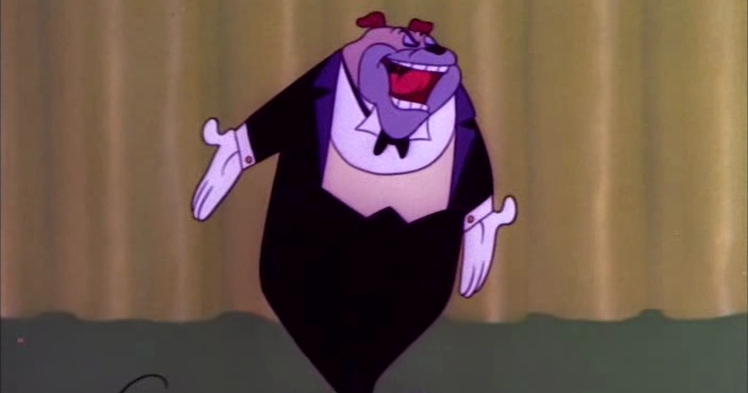That particular night wasn’t an issue since we were showing Batman in our two largest theaters anyway.
[tangent]
For those who aren’t familiar with film platters, here’s a video of a Christie platter system, the ones I am familiar with. Notice how the film is pulled from the center of one platter through a complicated thing in the middle (called the “brain”) and the film is wrapped around an aqua-colored 12 inch wide center ring on the other platter (barely visible). This is a nifty system because when the film starts, the tail is on the outside of the platter, and when the film ends the tail is on the outside of the new platter, with no rewinding necessary.
Moving a film from one platter to another wasn’t a big deal, there were a few ways to accomplish it.
When I was being trained, the other projectionist once asked me to help him swap the entire Christie platter: it could be picked up off of its bearings and carried to another projector, film and all, and then placed on the awaiting spindle (having previously removed the platter from that one). They weren’t really intended to be moved this way, but in a pinch two guys could do it rather quickly. Just don’t set it on the carpet like we did–the grease will stain the carpet.
The proper way to move a print was to place a platter clamp or two on the print to keep the coils from coming apart while you pick it up and move it to another machine.
I never liked those clamps because not only were they fussy to work with, they scratched the platter when you tried to shove them under the print.
I would move the movies without clamps at all. In the video above you can see that the film is wrapped very tightly around the green center ring, so it was enough to tape the loose end in place, pop the green center ring up enough so its two nylon alignment pins would clear the platter, then slide the pancake of film off the edge of the platter while simultaneously flipping it vertical. For a short film (e.g. 90 minutes) I could then carry it under my arm like a tire to the target projector and reverse the process.
One fateful Sunday morning I took my wife in before hours to watch Backdraft. It wasn’t in our largest theater, so I went to do my clamp-free flip the film up trick in order to move it over to the theater with the best audio. This film was substantially longer–more than 2 hours–so it was heaver and larger. As I approached the new platter, I watched in absolute horror as the center ring dropped out and two miles of film simply collapsed in loose coils all over the floor. The words that I spoke have been lost to the mists of time.
My wife was smart and she simply backed away and took a seat on the couch without saying a word.
It took me almost all of the time we would have been watching the film to repair that mess. I had to break the film in dozens of places in order to separate sections that had remained more or less intact, then I unraveled the loops up and down the fifty or so yards length of the booth (common practice), taking care to take loops off alternating sides so as to not introduce twists. I then used a motor drive reel hub at the work bench to reassemble the mess onto two giant make-up reels. I then went over to the correct machine and assembled the two halves just like I was building the new films on a Friday morning.
We ran the film cleaner on that print for the next few runs to clean off the dust from my episode. I can guarantee that nobody ever noticed the few dozen splices I had to add–our splicing tools were quite good and since I used the splicer’s guillotine to make the break, we didn’t even lose any frames.
[double-tangent]
One of the more interesting things we did with platters was show films in multiple theaters. There were two electrical busses along the wall that projectors could be synchronized to via a “sync” switch. If two projectors were synced to bus A then their motors would run in perfect synchronization. By doing this, we could thread the film from the platter on Projector #1 through the projector, then up through a bit of a Rube Goldberg contraption of pulleys to carry it to Projector #2, then eventually it would be taken up by the platter system next to Projector #2.
That’s why back in the day you might see “Die Hard” showing in two theaters as you walked down the corridor, and you might see a scene in the first theater appearing in the second after a 30 second delay.
We could do more than two. The most I did was 3, for Ghostbusters II. That sucked because the pulleys weren’t set up right for it so we had to move one of the pulleys for each showing. You would get it all set up, press the Start button, and pray that all three lamps would light (if one didn’t the whole mess would shut down).
The most I heard about that was done before I got there was Fatal Attraction: they ran that in five theaters, using the jankiest of setups to get the film to go around the corner. I can only imagine the sweat dripping off the brow of the guy as he nervously pressed the Start button after triple and quadruple-checking everything.
[/double-tangent]
[/tangent]
.png)